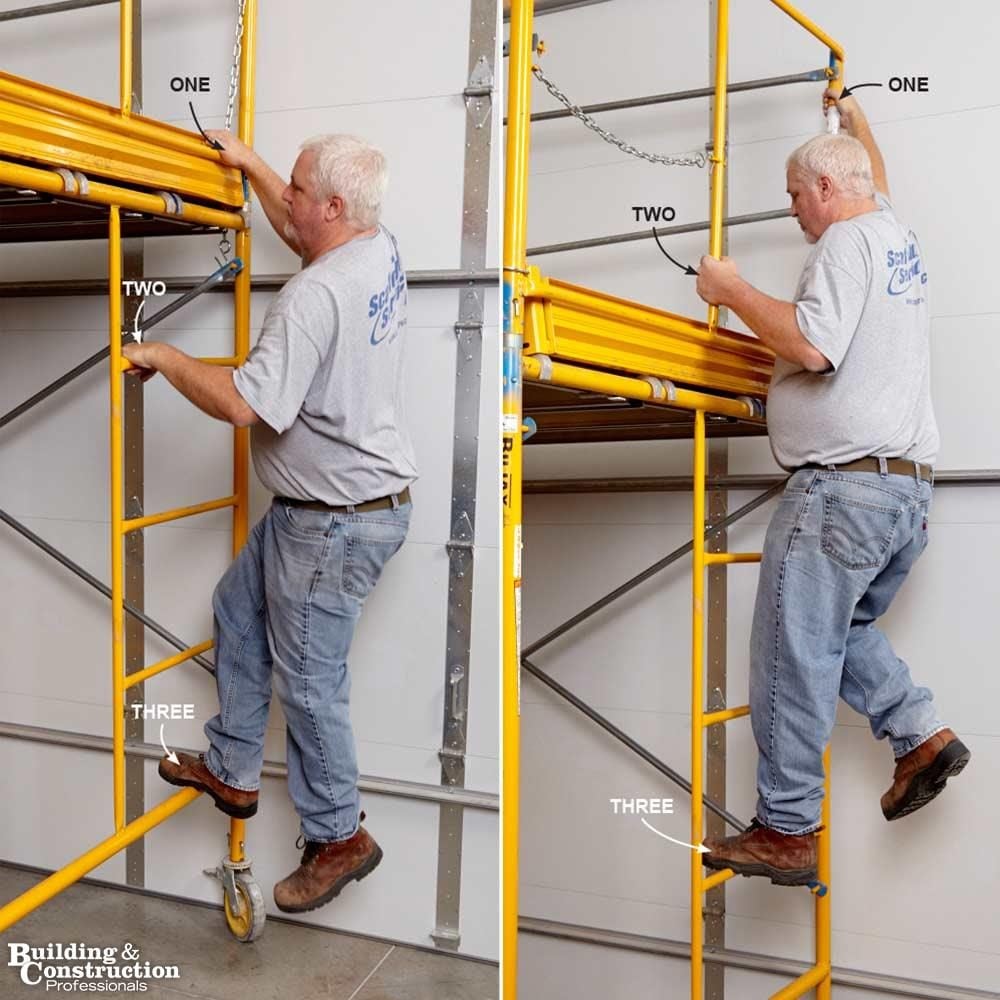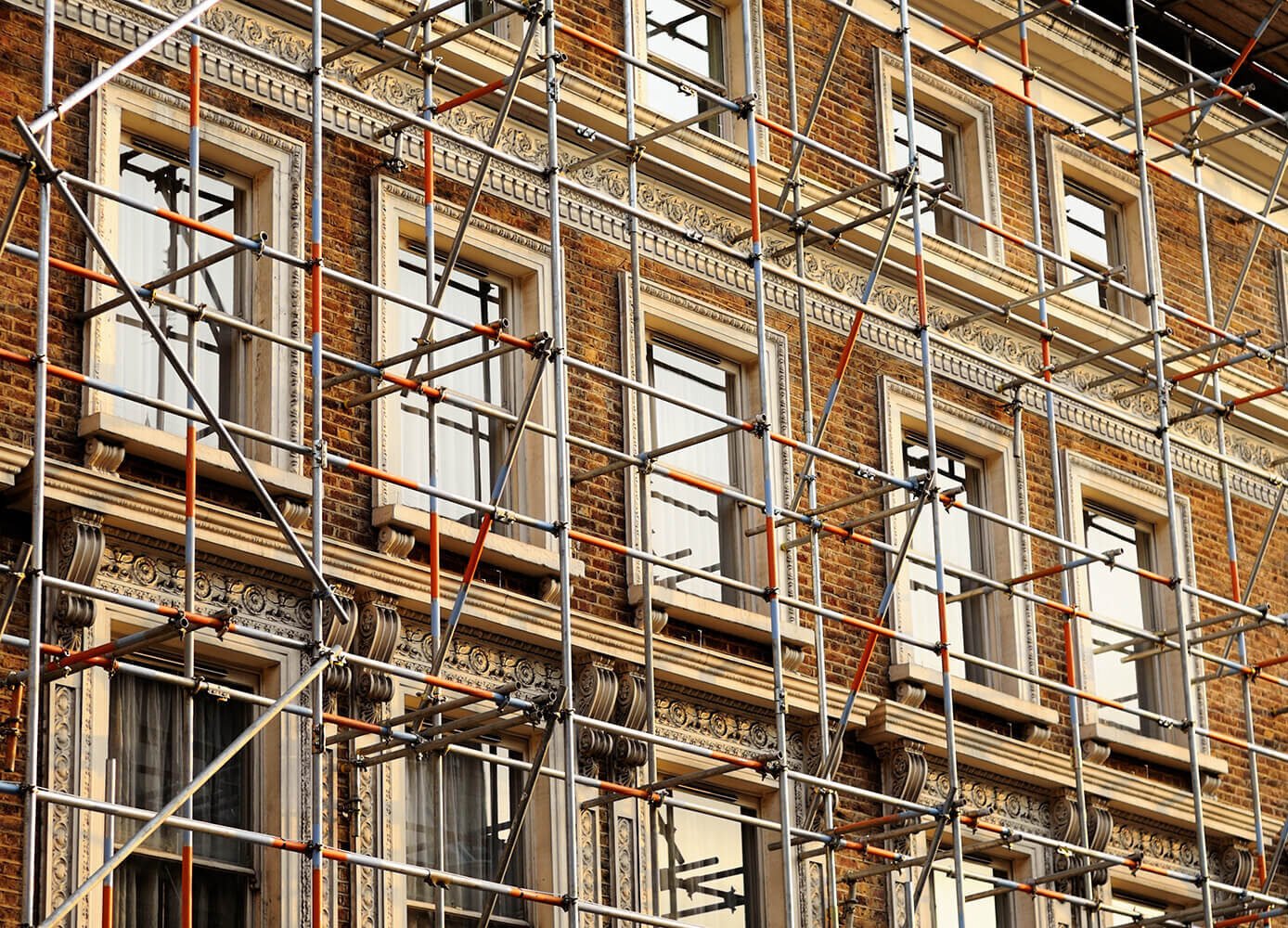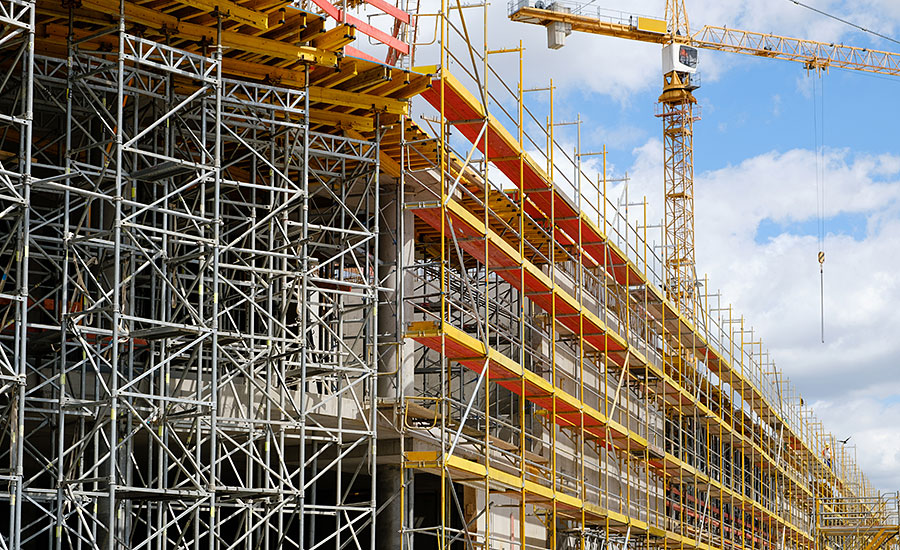A Comprehensive Guide to the Important Features of Scaffolding in Modern Construction
The landscape of modern-day construction increasingly depends on effective scaffolding systems that prioritize development, safety and security, and efficiency. As jobs grow in complexity, understanding the necessary features of scaffolding comes to be critical for ensuring worker safety and optimizing project timelines.
Kinds Of Scaffolding
Although scaffolding systems can differ commonly in style and application, they generally come under several distinctive groups that provide to different building needs - Scaffolding. The most usual kinds consist of supported scaffolding, put on hold scaffolding, and rolling scaffolding
Sustained scaffolding includes systems supported by a structure of poles, which provide a raised and secure working surface area. This kind is generally utilized for tasks that call for substantial elevation, such as bricklaying or exterior paint.
Suspended scaffolding, alternatively, is used for jobs needing accessibility to high elevations, such as cleansing or fixing building exteriors. This system hangs from one more structure or a rooftop, allowing employees to lower or elevate the platform as required.
Moving scaffolding features wheels that permit simple flexibility throughout a work website. It is particularly beneficial for tasks that require frequent relocation, such as indoor job in big areas.
Each kind of scaffolding is created with specific applications in mind, ensuring that building tasks can be accomplished efficiently and successfully. Comprehending these groups is vital for picking the ideal scaffolding system to satisfy both task needs and site problems.
Key Security Functions
Safety and security is extremely important in scaffolding systems, as the possible threats related to functioning at heights can lead to major mishaps otherwise correctly taken care of. Trick security attributes are necessary to make sure the wellness of workers and the integrity of the building site.
Primarily, guardrails are important. These obstacles give a physical guard against falls, substantially decreasing the threat of severe injuries. In addition, toe boards are usually made use of to stop tools and materials from dropping off the scaffold, securing workers listed below.
One more crucial part is the usage of non-slip surfaces on platforms. This attribute improves grasp, particularly in unfavorable weather, thus reducing the possibility of slips and falls. Gain access to ladders must be securely positioned to help with secure entrance and departure from the scaffold.
Routine assessments and upkeep of scaffolding systems are likewise crucial. These evaluations ensure that all parts remain in good problem and functioning appropriately, dealing with any kind of wear or damages immediately.
Last but not least, correct training for all workers entailed in scaffolding operations is important to make sure that they understand security methods and can identify prospective hazards. Scaffolding. Jointly, these attributes create a much safer working setting and dramatically mitigate threats associated with scaffolding
Product Technologies
Advancements in material science have dramatically influenced the scaffolding market, enhancing both security and efficiency in modern-day building and construction. The intro of high-strength steel and light weight aluminum alloys has changed conventional scaffolding systems. These materials are not just lighter, making them simpler to set up and transfer, but also give premium load-bearing abilities. This leads to scaffolding frameworks that can sustain higher weights while reducing the risk of collapse.
Additionally, cutting-edge composite products, such as fiberglass-reinforced plastics, have become viable choices. These products are resistant to rust and environmental degradation, hence prolonging the life expectancy of scaffolding systems, especially in severe weather. Using such products contributes to lower maintenance costs and makes sure constant efficiency in time.


Layout Factors To Consider
Thinking about the intricacies of modern-day construction jobs, effective scaffolding style is vital to making sure both functionality and security. Layout factors to consider should encompass numerous factors, including lots capability, height, and the specific demands of the construction website. Each job provides unique obstacles, requiring a flexible strategy to scaffolding systems that can adapt to varying problems.
Structural honesty is essential; as a result, engineers need to calculate the loads that the scaffolding will sustain, including employees, materials, and devices. The choice of products plays a vital function in guaranteeing the scaffolding can withstand these lots while staying long lasting and lightweight. In addition, the style should enable very easy accessibility and egress, helping with the smooth movement of workers and products.
Security attributes, such as guardrails and non-slip surfaces, must be included to lessen threats of mishaps. The design needs to take into consideration the surrounding setting, consisting of adjacent structures and potential hazards. By resolving these layout factors to consider, building and construction companies can boost the performance of scaffolding systems and advertise a more secure working setting, inevitably contributing to the total success of the job.
Upkeep and Assessments
The efficiency of scaffolding systems prolongs beyond preliminary design and implementation; ongoing maintenance and normal examinations are essential to guaranteeing their proceeded efficiency and security throughout the duration of a project. Routine assessments must be performed by certified personnel to identify any signs of wear, damages, or instability that can endanger the stability of the scaffolding.
Maintenance procedures must include routine checks of structural components, such as slabs, frameworks, and fittings, making certain that all components stay safe and complimentary from rust or other wear and tear. In addition, the performance Home Page of safety functions, such as guardrails and toe boards, should be analyzed to make sure compliance with security regulations.
Documents of all examinations and upkeep tasks is essential for responsibility and regulatory compliance. An organized approach to record-keeping not just help in tracking the problem of the scaffolding but additionally offers needed evidence in case of a case.
Ultimately, developing a comprehensive maintenance and examination schedule will substantially lower the risk of mishaps and boost the total safety of the building website. By prioritizing these practices, building supervisors can safeguard workers and maintain the task's integrity.

Verdict
To conclude, the crucial attributes of scaffolding in modern-day building and construction incorporate a range of crucial elements, including diverse types, essential security systems, material developments, and thoughtful layout factors to consider. Stressing safety and security with guardrails and non-slip surfaces, along with innovations in products like high-strength steel, boosts both efficiency and sustainability. In addition, normal upkeep and assessments are crucial for ensuring architectural stability and safety on building and construction sites, ultimately promoting effective task execution and advertising the wellness of employees.
The landscape of modern-day building increasingly counts on effective scaffolding systems that focus on innovation, security, and efficiency.Advancements in material scientific research have dramatically influenced the scaffolding market, boosting both safety and efficiency in contemporary building and construction. In general, these product technologies not only enhance the performance and security of scaffolding systems however additionally straighten with the market's press in the direction of sustainability, as news numerous modern materials are developed to be a lot more eco friendly.
Considering the complexities of contemporary building and construction jobs, reliable scaffolding layout is paramount to ensuring both functionality and safety.In conclusion, the important functions of scaffolding in contemporary building incorporate a variety of essential elements, consisting of varied types, essential security mechanisms, material innovations, and thoughtful layout factors to consider.